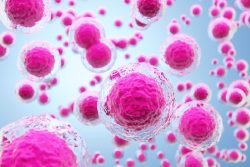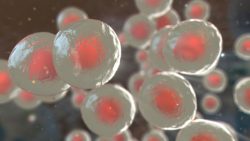 Stem cells impact the immune system in various ways, influencing tissue repair, modulating immune responses, and affecting the progression of certain diseases, both directly and indirectly. Blood is composed of various cell types that evolve from a common precursor, the blood stem cell. A research team has recently explored the developmental pathways of human blood cells and have found surface proteins that help them inhibit the activation of inflammatory and immune responses within the body.
Stem cells impact the immune system in various ways, influencing tissue repair, modulating immune responses, and affecting the progression of certain diseases, both directly and indirectly. Blood is composed of various cell types that evolve from a common precursor, the blood stem cell. A research team has recently explored the developmental pathways of human blood cells and have found surface proteins that help them inhibit the activation of inflammatory and immune responses within the body.
Approximately 5 million new blood cells are produced every second by a human adult. They replace those that are aging or dying, highlighting the highly regenerative nature of the blood system. These new blood cells originate from unspecialized cells in the bone marrow, known as blood stem cells.
These stem cells undergo several transitional stages to develop into erythrocytes that transport oxygen, platelets that aid in blood clotting, and a diverse group of white blood cells responsible for immune defense. Called “differentiation” this process requires precise regulation to maintain balanced production of mature blood cells across all types and needs careful control to ensure an even distribution among the various types.
The research team has molecularly deciphered how human blood stem cells differentiate into all specialized blood cell types. They successfully obtained insights into the molecular activities within stem cells and identified new surface proteins that play key roles in the intricate interactions between stem cells and their bone marrow surroundings. This offers detailed insights into the unique characteristics of stem cells and the specific genes that regulate their differentiation.
The researchers discovered a protein named PD-L2 on the surface of blood stem cells. This protein is known to suppress the immune response by inhibiting the activation and proliferation of T cells, our defense cells, and by preventing the release of cytokines which are inflammatory agents. This is crucial for shielding stem cells from potential attacks by reactive T cells and is likely a key factor in stem cell transplantations using grafts from unrelated donors. PD-L2 may assist in lowering the body’s immune response to the transplanted stem cells.
To view the original scientific study click below:
Continuous map of early hematopoietic stem cell differentiation across human lifetime





